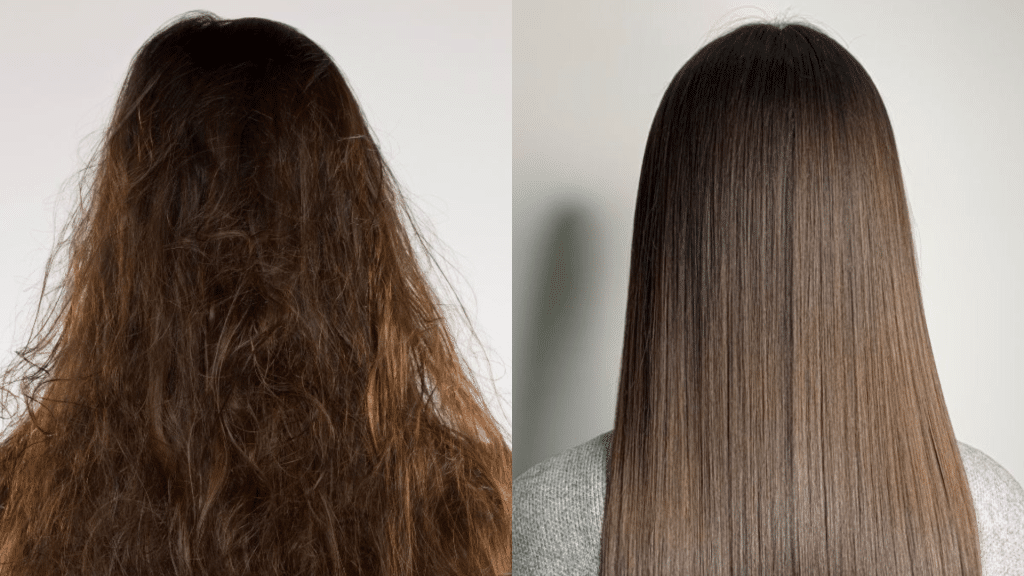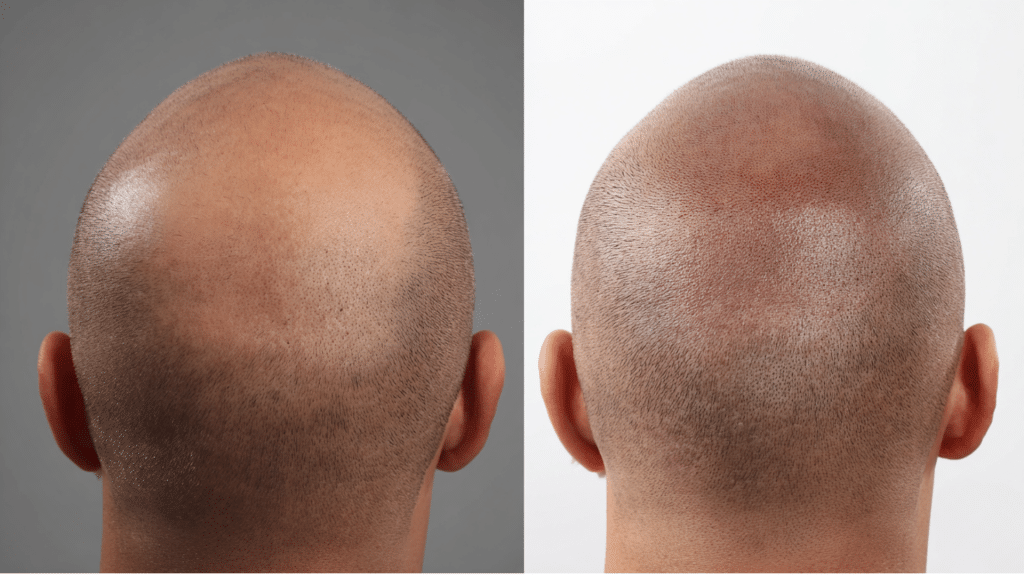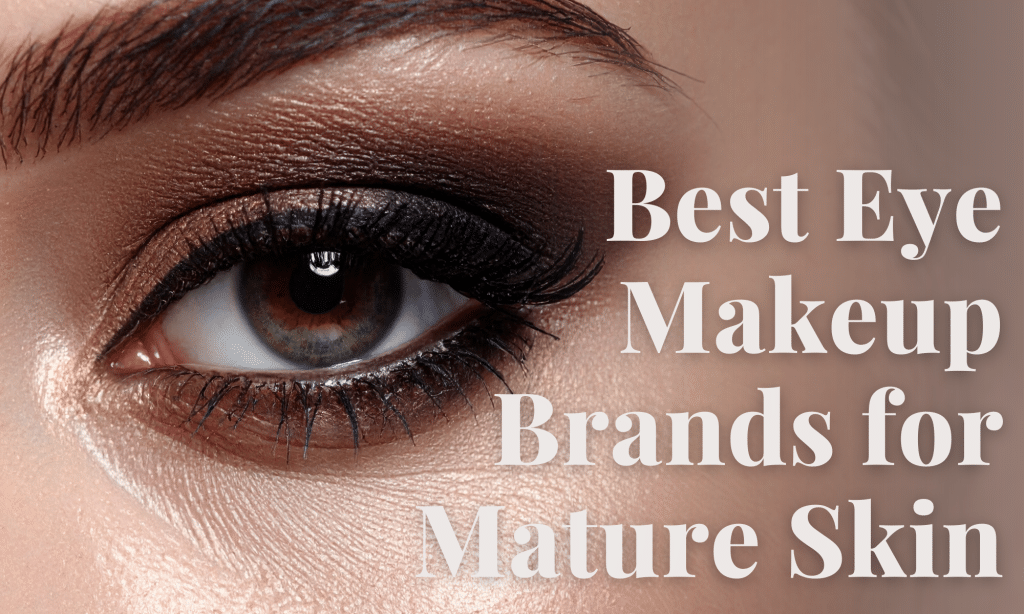Tired of battling your curls every morning? You’re not alone in this daily hair war.
Millions of people worldwide struggle with unruly, frizzy, or overly curly hair that refuses to cooperate. While heat tools and styling products offer temporary fixes, they often leave you frustrated and running late for work.
That’s where chemical straightening comes in as a game-changing solution.
Chemical straightening alters your hair’s natural structure, providing you with months of smooth, manageable locks without the daily styling hassle.
This hair straightening treatment breaks down your hair’s protein bonds and rebuilds them in a straighter pattern, creating long-lasting results that withstand humidity and weather changes.
This guide covers everything you need to know about chemical straightening – from keratin straightening and other treatment types to processes, costs, benefits, and potential risks.
Types of Chemical Hair Straightening Treatments
Chemical hair straightening treatments come in different forms, each with its own formula, process, and results. Here’s a breakdown of the most popular methods:
1. Relaxers
Relaxers are one of the most common chemical treatments for hair straightening. They work by breaking down the natural curl pattern of the hair through chemical processing, leaving the hair smoother and straighter.
| Lye Relaxers | No-Lye Relaxers |
|
These relaxers use sodium hydroxide to break down the hair’s protein bonds. They are powerful and provide long-lasting results but can be harsh on the scalp, especially if left on for too long. They’re generally used for very coarse or tightly curled hair. |
This type uses a different chemical, usually calcium hydroxide or guanidine hydroxide. While no-lye relaxers are less irritating to the scalp, they can cause dryness and damage to the hair if used frequently. They’re perfect for individuals with sensitive scalps. |
2. Japanese Hair Straightening (Thermal Reconditioning)
Japanese hair straightening, also known as thermal reconditioning, is a permanent method of straightening hair by changing its structure. This treatment works by breaking the hair’s natural bonds with a chemical solution, followed by the application of heat to reshape and straighten the hair.
Process: The solution is applied to the hair, then the hair is flat-ironed to ensure the straightened texture. It’s a long process, typically lasting between 3-6 hours, depending on hair type and length.
Ideal for: This treatment works best for individuals with thick, curly, or wavy hair. The results are permanent, but they require touch-ups as your hair grows.
3. Keratin Treatments
Keratin treatments are often confused with hair straightening, but they are more about smoothing than straightening. These treatments use a formaldehyde-based or formaldehyde-free formula that coats the hair with a layer of keratin protein, helping to reduce frizz and smooth the hair.
Process: The keratin solution is applied to the hair, then sealed in with a flat iron to lock in the straightening and smoothing effects. The treatment typically takes about 2-3 hours to complete.
Ideal for: Perfect for those with wavy, frizzy, or curly hair seeking a smoother, shinier style. Perfect for those wanting straight hair with more movement than typical chemical treatments.
4. Brazilian Blowout
The Brazilian Blowout is a specific type of keratin treatment that is designed to smooth, straighten, and add shine to the hair. It uses a mixture of keratin and other ingredients to coat the hair and protect it from frizz and humidity.
Process: After the solution is applied to the hair, it is sealed using a flat iron, which helps to lock in the smoothing effects.
Ideal for: Those who want a low-maintenance straightening option with a natural finish, as the hair remains smooth without being pin-straight.
5. Thermal Reconditioning (Rebonding)
This method is similar to Japanese hair straightening, but it’s typically done in a slightly different manner. Thermal reconditioning is often used for highly textured or curly hair that needs a permanent solution.
Process: The hair is treated with a chemical solution to break down its natural bonds. Afterward, the hair is flat-ironed to a smooth, straight texture. This is followed by a neutralizing agent to lock in the straightened shape.
Ideal for: Those looking for a long-term straightening solution for very curly, coarse, or wavy hair.
Each of these treatments has its own set of advantages and is best suited to different hair types and needs. If you’re looking for a permanent solution or a semi-permanent smoothing effect, there’s a chemical straightening treatment that can help you achieve the look you desire.
The Chemical Hair Straightening Process
Ready to say goodbye to your curls?
Here’s how science helps your hair achieve straight perfection.
1. Preparation (15-20 minutes)
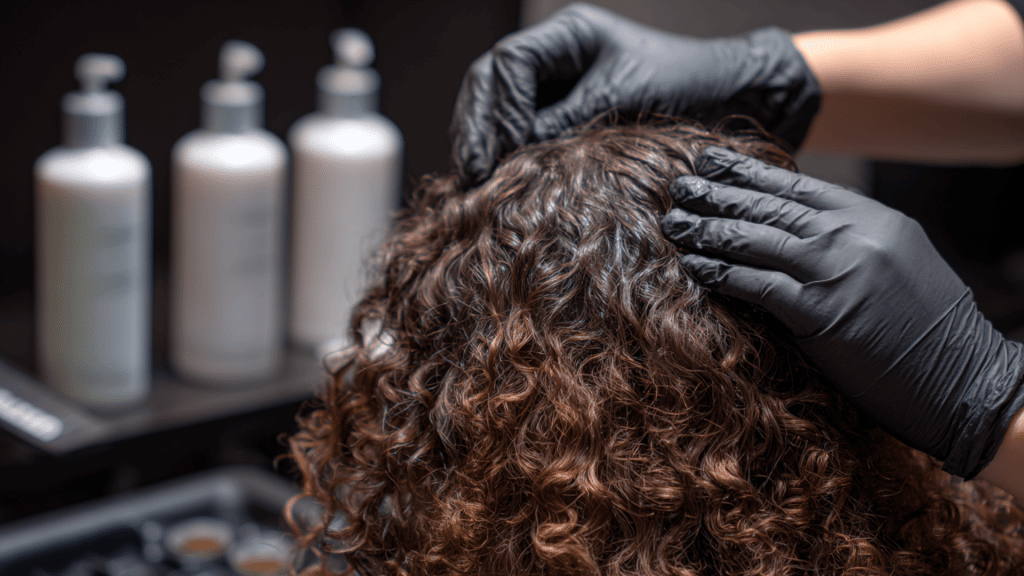
A professional examines your hair type, texture, and overall condition. They check for previous chemical treatments, damage, or scalp sensitivity to determine if straightening is safe and which formula works best for your hair.
Hair gets thoroughly cleaned with clarifying shampoo to remove all dirt, natural oils, styling products, and buildup. Clean hair allows the chemical relaxer to penetrate evenly and work effectively.
2. Chemical Relaxer Application (20-30 minutes)
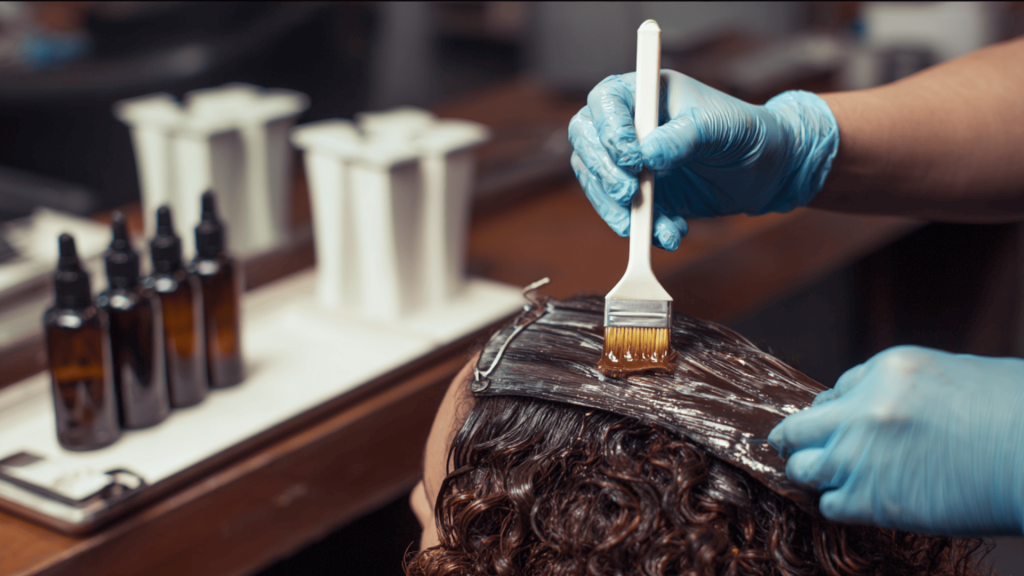
Chemical relaxer containing sodium hydroxide or guanidine hydroxide gets applied evenly to small hair sections, starting from the back and working forward.
The stylist applies a brush or applicator to coat each strand, avoiding the scalp to prevent burns. The relaxer breaks disulfide bonds that form curls. Processing time varies: 8-12 minutes for fine hair, 15-20 minutes for coarse. The stylist monitors to avoid over-processing.
3. Rinsing (10-15 minutes)
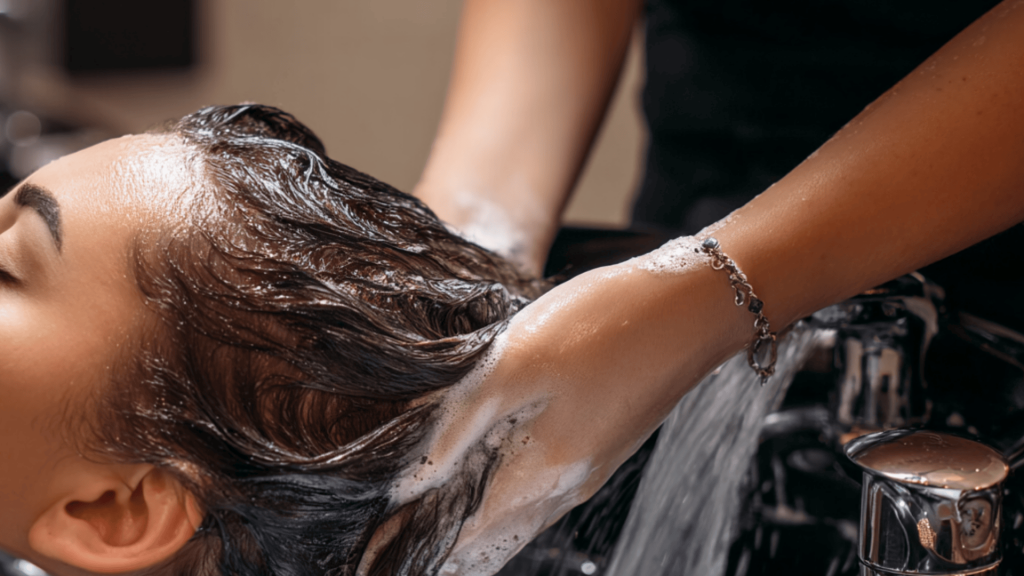
The relaxer is thoroughly rinsed with lukewarm water to immediately stop the chemical action. Complete removal is critical to prevent continued processing and potential hair damage.
Special neutralizing shampoo removes any remaining relaxer residue and restores the hair’s pH balance to normal levels.
4. Neutralization and Conditioning (15-20 minutes)
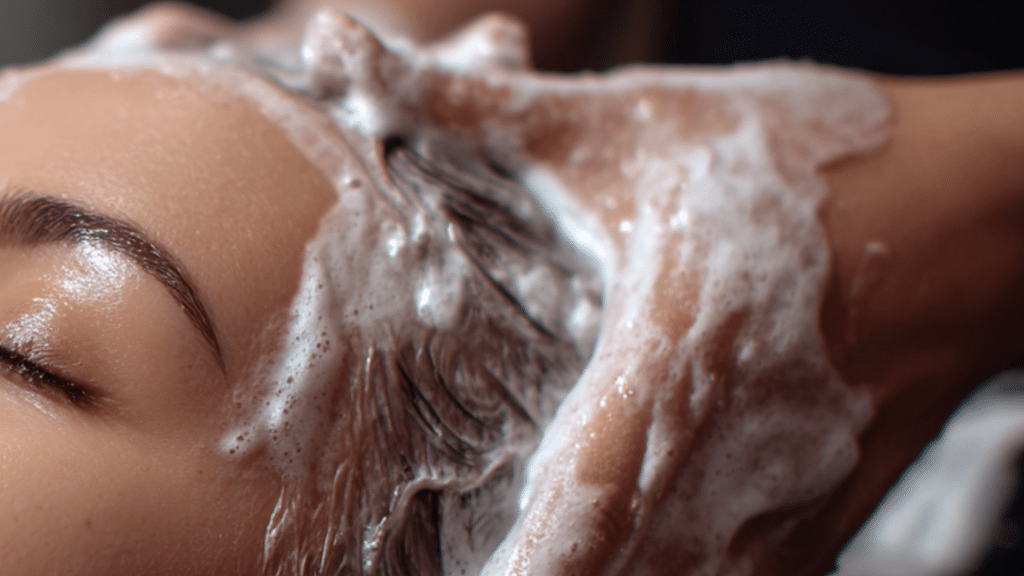
Neutralizer Application: Neutralizer gets applied section by section to set the new straight shape and halt all chemical reactions. This step locks in the straightened structure and strengthens the reformed bonds.
Deep Conditioning: Rich conditioning treatment restores moisture, proteins, and nutrients that the chemical process stripped away. This step is vital for maintaining hair health and preventing breakage.
5. Drying and Styling (30-45 minutes)
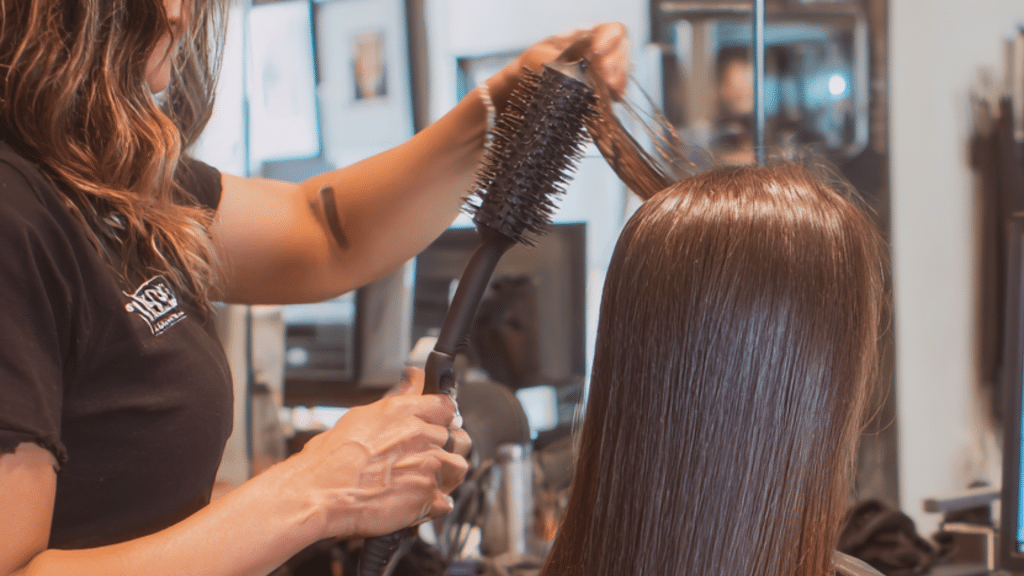
Blow Drying: Hair gets blow-dried using a round brush to smooth the cuticles and begin the straightening process. Proper technique ensures even results.
Flat Ironing: Professional flat iron seals the straightened pattern and creates the final smooth, sleek look. Heat helps set the new structure.
Hair gets styled with smoothing serum or light oils for added shine and frizz protection.
6. Aftercare
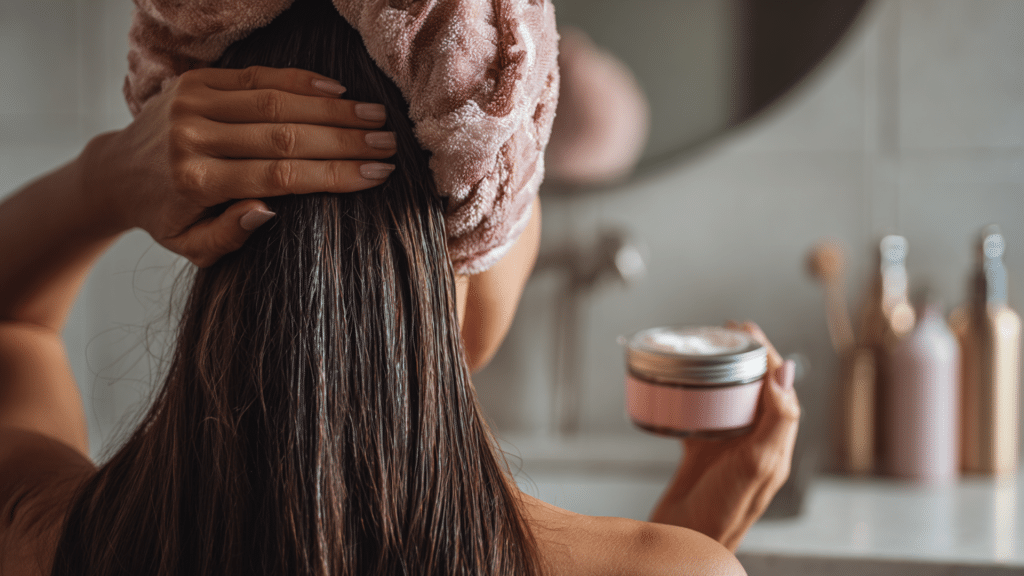
No washing, ponytails, or clips to allow the new structure to fully set. Weekly deep conditioning treatments and monthly protein treatments maintain chemically treated hair health.
New growth at the roots needs retreatment as the original texture returns.
Total Process Time: 90-130 minutes
Results are semi-permanent, lasting until natural hair grows out and original curl pattern returns at the roots.
Pros and Cons of Chemical Hair Straightening
✅ Pros
|
❌ Cons
|
How Long Does Chemical Hair Straightening Last?
Duration: 3-6 months on average
Chemical hair straightening provides long-lasting results, but the duration can vary depending on several factors. Here’s a breakdown of what influences how long the results will stay:
- Hair Growth: New hair with natural texture grows at roots (about half an inch monthly), creating contrast with straightened lengths.
- Hair Type: Thicker, coarser hair holds straightened results longer than fine hair, which may need more frequent touch-ups.
- Aftercare: Proper care extends results – moisturizing shampoos, minimal heat styling, and protection from harsh elements help maintain the smooth look.
- Maintenance: Regular touch-ups keep the straight appearance consistent as new growth appears.
Results fade as natural hair grows back. Touch-ups every 3-6 months keep the look consistent, but expect visible texture differences between treated and new growth areas.
Alternatives to Chemical Straightening of Hair
If you want straighter hair without chemicals, here are a few options:
- Heat Styling Tools: Use flat irons or blowouts for temporary straightening.
- Keratin Treatments: Smooths and reduces frizz, lasting up to 3 months.
- Hair Smoothing Products: Leave-in conditioners and anti-frizz serums can tame hair for a sleeker look.
- Natural Methods: DIY treatments like coconut milk and lemon juice or milk and honey can help smooth hair over time.
These methods offer gentle alternatives that don’t involve permanent chemical changes, though a bit of ongoing care is needed.
The Bottom Line
Chemical straightening provides a powerful solution for individuals seeking long-term freedom from daily hair styling struggles.
From relaxers and keratin treatments to Japanese straightening, each method provides unique benefits suited to different hair types and lifestyle needs.
The process needs expert care, proper aftercare, and maintenance every 3-6 months as new growth appears. Though it offers smooth hair for months, consider the costs, damage risks, and ongoing commitment before deciding.
Healthy hair begins with informed choices. Consider hair type, budget, and maintenance when choosing a straightening method.
Ready to take the plunge or still have questions about your hair transformation options? Drop a comment below and share your chemical straightening experiences or concerns – we’d love to help guide your decision!

